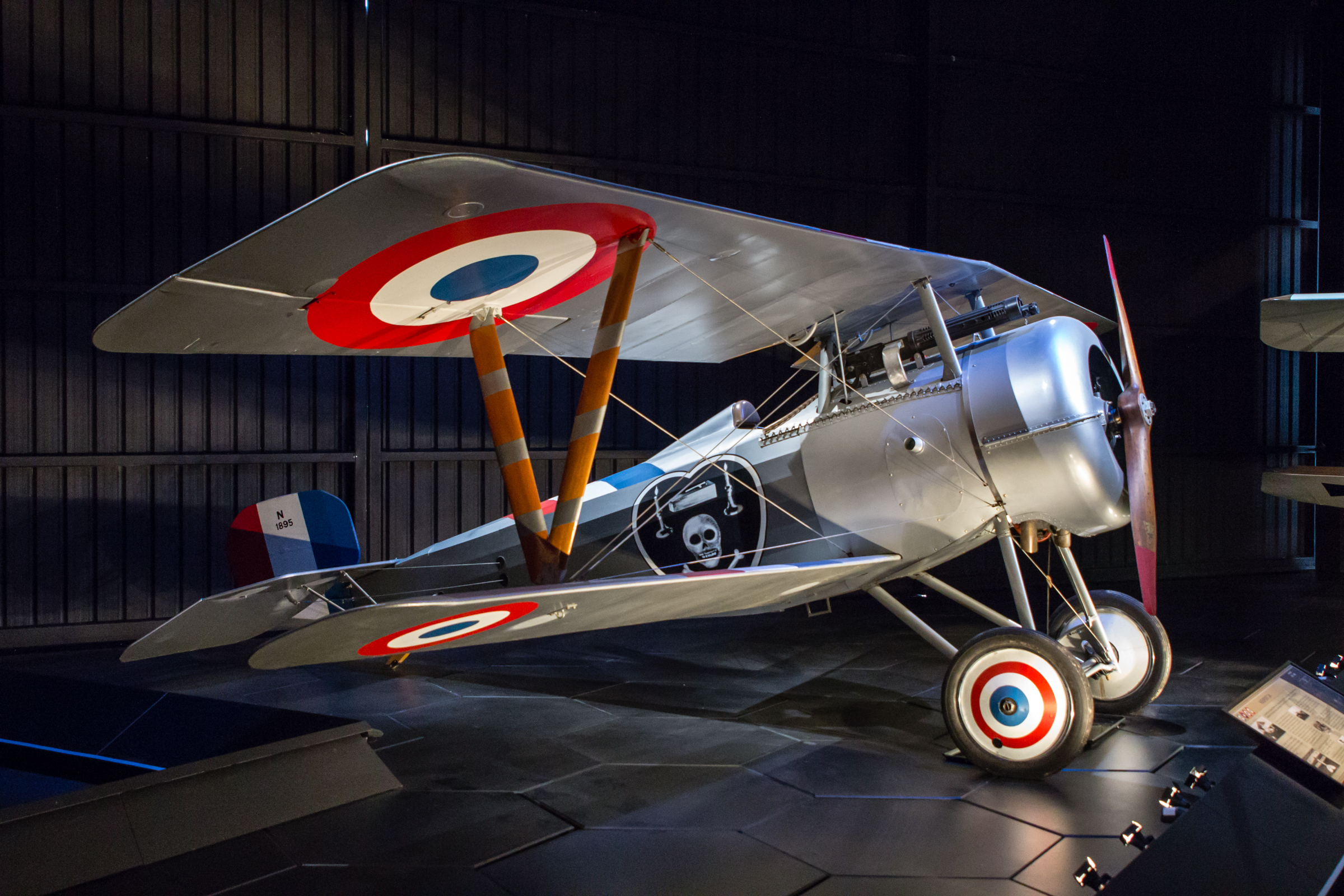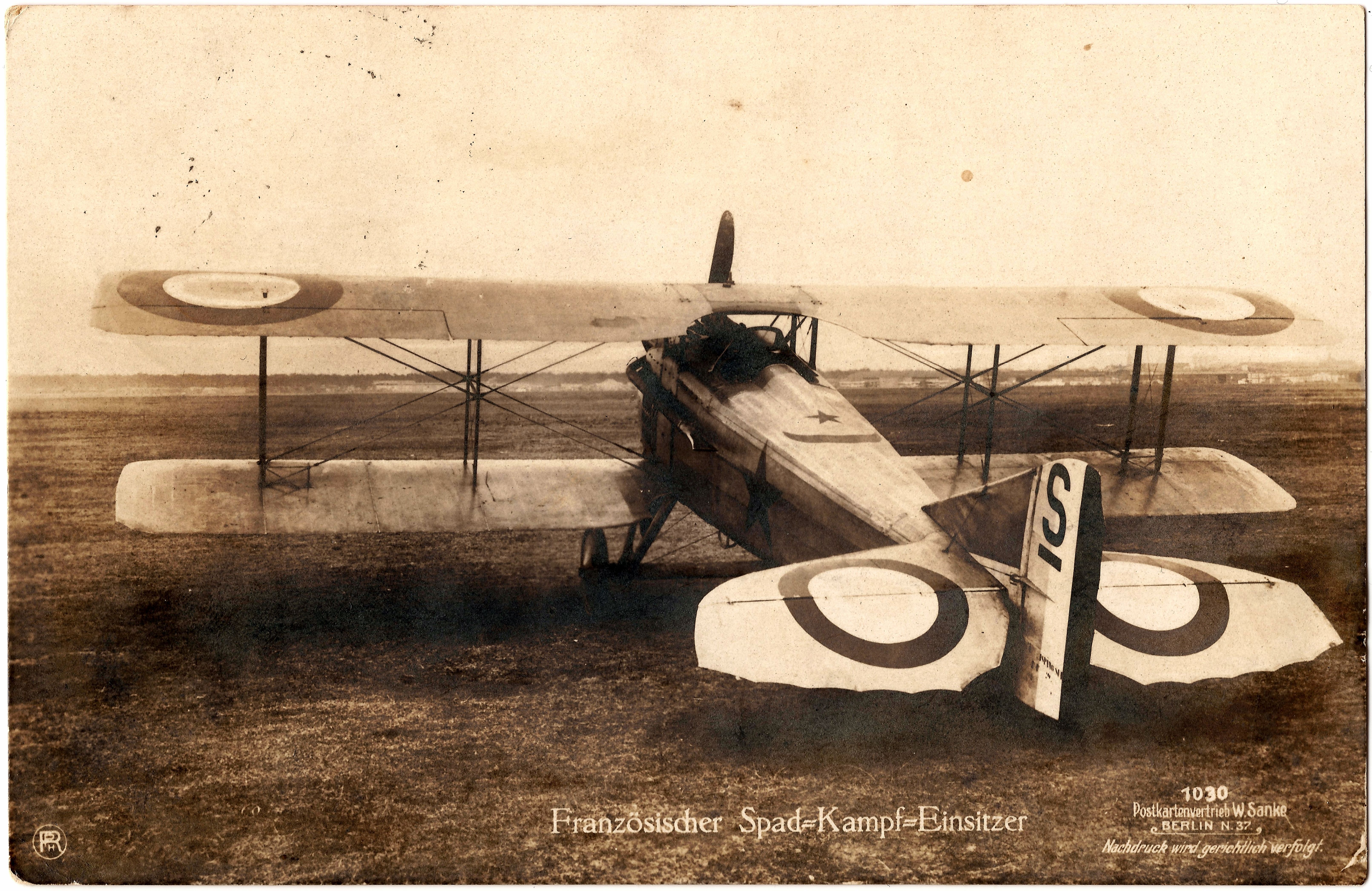|
Escadrille N.65
''Escadrille 65'' of the French Air Force was established during World War I. It was founded at Lyon-Bron Airport on 2 August 1915. History Though it was equipped with a mixed bag of aircraft, it was designated as ''Escadrille C 65'' for its Caudron G.IVs. It was assigned to ''VII Armee'' of the French Army on 24 October 1915. It was re-equipped in its entirety with Nieuports, and was redesignated ''Escadrille N 65'' on 21 February 1916. In June 1916, it was consolidated into an ad hoc ''Groupe de Combat'' that was based at Cachy. Other ''escadrilles'' within the ''Groupe'' were '' N3'', '' N37'', '' N62'', '' N73'', and '' N103''. In early November 1916, ''Escadrille N65'' was reassigned into ''Groupe de Combat 13''. ''GC 13'' also contained '' Escadrille N67'', '' Escadrille N112'', and '' Escadrille N.124''.Franks, Bailey 1992, pp. 94-95. On 5 December 1916, ''Escadrille N 65'' received its first citation. As 1917 began, the ''escadrille'' was operating a mixture of ''Spad ... [...More Info...] [...Related Items...] OR: [Wikipedia] [Google] [Baidu] |
French Air Service
The French Air and Space Force (, , ) is the air force, air and space force of the French Armed Forces. Formed in 1909 as the ("Aeronautical Service"), a service arm of the French Army, it became an independent military branch in 1934 as the French Air Force (). On 10 September 2020, it assumed its current name, the French Air and Space Force, to reflect an "evolution of its mission" into the area of outer space. The number of aircraft in service with the French Air and Space Force varies depending on the source; the Ministry of Armed Forces (France), Ministry of Armed Forces gives a figure of 658 aircraft in 2014. According to 2025 data, this figure includes 207 combat aircraft: 99 Dassault Mirage 2000 and 108 Dassault Rafale. the French Air and Space Force employs a total of 40,500 regular personnel, with a military reserve forces of France, reserve element of 5,187 in 2014. The Chief of Staff of the French Air and Space Force (CEMAAE) is a direct subordinate of the Chief of ... [...More Info...] [...Related Items...] OR: [Wikipedia] [Google] [Baidu] |
Escadrille N
A flight is a small military unit within the larger structure of an air force, naval air service, or army air corps; and is usually subordinate to a larger squadron. A military aircraft flight is typically composed of four aircraft, though two to six aircraft may also form an aircraft flight; along with their aircrews and ground staff. In some very specific examples, typically involving historic aircraft, a flight may contain as many as twelve aircraft, as is the case with the Battle of Britain Memorial Flight (BBMF) of the British Royal Air Force (RAF). In most usages, two or more flights make up a squadron. Foreign languages equivalents include ( French), ( Spanish), ( Portuguese), ''lanka'' ( Ukrainian), ( Romanian), ( Russian), and ( German). In the case of a non-flying, or "ground flight", such as Mechanical Transport Flight (MTF), Supply Flight, Accounts Flight, etc; no aircraft, and a roughly equivalent number of support personnel may be utilised. The term "fl ... [...More Info...] [...Related Items...] OR: [Wikipedia] [Google] [Baidu] |
Paul Sauvage (aviator)
Sergent Paul Joannes Sauvage (5 February 1897—7 January 1917) was a French World War I flying ace credited with 8 confirmed and 6 probable aerial victories. He was originally posted to fly a Nieuport for Escadrille N 65, and scored his first victory with them on 16 July 1916. He became the youngest French ace on 2 October at age 19 years and 239 days, and held that distinction until his death by anti-aircraft fire on 7 January 1917.''Nieuport Aces of World War 1'', p. 58 12 days later Pierre Marinovitch scored his 5th victory and became the youngest French ace until the end of the war, at the point of his 5th victory was Marinovith even younger than Savage on 2 October by exactly 70 days (19 years and 169 days). Early life Paul Joannes Sauvage was born in Villefranche-sur-Saône, France on 5 February 1897.''Over the Front: A Complete Record of the Fighter Aces and Units of the United States and French Air Services, 1914-1918'', p. 218. World War I military service On 29 ... [...More Info...] [...Related Items...] OR: [Wikipedia] [Google] [Baidu] |
Jacques Gerard
Jacques or Jacq are believed to originate from the Middle Ages in the historic northwest Brittany region in France, and have since spread around the world over the centuries. To date, there are over one hundred identified noble families related to the surname by the Nobility & Gentry of Great Britain & Ireland. Origins The origin of this surname comes from the Latin ' Iacobus', associated with the biblical patriarch Jacob. Ancient history A French knight returning from the Crusades in the Holy Lands probably adopted the surname from "Saint Jacques" (or "James the Greater"). James the Greater was one of Jesus' Twelve Apostles, and is believed to be the first martyred apostle. Being endowed with this surname was an honor at the time and it is likely that the Church allowed it because of acts during the Crusades. Indeed, at this time, the use of biblical, Christian, or Hebrew names and surnames became very popular, and entered the European lexicon. Robert J., a Knight Crusader ... [...More Info...] [...Related Items...] OR: [Wikipedia] [Google] [Baidu] |
Sergeant
Sergeant (Sgt) is a Military rank, rank in use by the armed forces of many countries. It is also a police rank in some police services. The alternative spelling, ''serjeant'', is used in The Rifles and in other units that draw their heritage from the British light infantry. The word "sergeant" derives from the Latin , 'one who serves', through the Old French term . In modern hierarchies the term ''sergeant'' refers to a non-commissioned officer positioned above the rank of a corporal, and to a police officer immediately below a lieutenant in the US, and below an inspector in the UK. In most armies, the rank of sergeant corresponds to command of a team/section (military unit), section, or squad. In Commonwealth of Nations, Commonwealth armies, it is a more senior rank, corresponding roughly to a platoon second-in-command. In the United States Army, sergeant is a more junior rank corresponding to a fireteam leader or assistant squad-leader; while in the United States Marine Corps ... [...More Info...] [...Related Items...] OR: [Wikipedia] [Google] [Baidu] |
Charles Nungesser
Charles Eugène Jules Marie Nungesser (15 March 1892 – presumably on or after 8 May 1927) was a French ace pilot and adventurer. Nungesser was a renowned ace in France, ranking third highest in the country with 43 air combat victories during World War I. After the war, Nungesser mysteriously disappeared on an attempt to make the first non-stop transatlantic flight from Paris to New York, flying with wartime comrade François Coli in '' L'Oiseau Blanc'' (The White Bird). Their aircraft took off from Paris on 8 May 1927, was sighted once more over Ireland, and then was never seen again. The aircraft was either lost over the Atlantic or crashed in Newfoundland or Maine. Two weeks after Nungesser and Coli's attempt, Charles Lindbergh successfully made the journey, flying solo from New York to Paris in '' Spirit of St. Louis''. Monuments and museums honoring Nungesser and Coli's attempt exist at Le Bourget airport in Paris and on the cliffs of Étretat, the location from which th ... [...More Info...] [...Related Items...] OR: [Wikipedia] [Google] [Baidu] |
NZ290315 Omaka Nieuport 24bis 02
New Zealand () is an island country in the southwestern Pacific Ocean. It consists of two main landmasses—the North Island () and the South Island ()—and over 600 smaller islands. It is the sixth-largest island country by area and lies east of Australia across the Tasman Sea and south of the islands of New Caledonia, Fiji, and Tonga. The country's varied topography and sharp mountain peaks, including the Southern Alps (), owe much to tectonic uplift and volcanic eruptions. New Zealand's capital city is Wellington, and its most populous city is Auckland. The islands of New Zealand were the last large habitable land to be settled by humans. Between about 1280 and 1350, Polynesians began to settle in the islands and subsequently developed a distinctive Māori culture. In 1642, the Dutch explorer Abel Tasman became the first European to sight and record New Zealand. In 1769 the British explorer Captain James Cook became the first European to set foot on and map New Zea ... [...More Info...] [...Related Items...] OR: [Wikipedia] [Google] [Baidu] |
Croix De Guerre
The (, ''Cross of War'') is a military decoration of France. It was first created in 1915 and consists of a square-cross medal on two crossed swords, hanging from a ribbon with various degree pins. The decoration was first awarded during World War I, again in World War II, and in other conflicts; the '' croix de guerre des théâtres d'opérations extérieures'' ("cross of war for external theatres of operations") was established in 1921 for these. The was also commonly bestowed on foreign military forces allied to France. The may be awarded either as an individual award or as a unit award to those soldiers who distinguish themselves by acts of heroism involving combat with the enemy. The medal is awarded to those who have been " mentioned in dispatches", meaning a heroic deed or deeds were performed meriting a citation from an individual's headquarters unit. The unit award of the with palm was issued to military units whose members performed heroic deeds in combat and were ... [...More Info...] [...Related Items...] OR: [Wikipedia] [Google] [Baidu] |
Observation Balloon
An observation balloon is a type of balloon that is employed as an aerial platform for gathering intelligence and spotting artillery. The use of observation balloons began during the French Revolutionary Wars, reaching their zenith during World War I, and they continue in limited use today. Synonyms include espionage balloon, reconnaissance balloon, spy balloon, and surveillance balloon. Historically, observation balloons were filled with hydrogen. The balloons were fabric envelopes filled with hydrogen gas, the flammable nature of which led to the destruction of hundreds of balloons. Observers manning these observation balloons frequently had to use a parachute to evacuate their balloon when it came under attack. Shortly after World War I, observation balloons were often filled with non-flammable helium to avoid the potentially explosive consequences of hydrogen. Typically, balloons were tethered to a steel cable attached to a winch that reeled the gas bag to its desired hei ... [...More Info...] [...Related Items...] OR: [Wikipedia] [Google] [Baidu] |
Flanders
Flanders ( or ; ) is the Dutch language, Dutch-speaking northern portion of Belgium and one of the communities, regions and language areas of Belgium. However, there are several overlapping definitions, including ones related to culture, language, politics, and history, and sometimes involving neighbouring countries. The demonym associated with Flanders is Flemings, Fleming, while the corresponding adjective is Flemish people, Flemish, which can also refer to the collective of Dutch dialects spoken in that area, or more generally the Belgian variant of Standard Dutch. Most Flemings live within the Flemish Region, which is a federal state within Belgium with its own elected government. However, like Belgium itself, the official capital of Flanders is the City of Brussels, which lies within the Brussels, Brussels-Capital Region, not the Flemish Region, and the majority of residents there are French speaking. The powers of the Flemish Government in Brussels are limited mainly ... [...More Info...] [...Related Items...] OR: [Wikipedia] [Google] [Baidu] |



